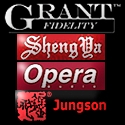
You are reading the older HTML site
Positive Feedback ISSUE
44july/august 2009
spectron audio
Musician III Mk. 2 amplifiers
as reviewed by Adam Goldfine
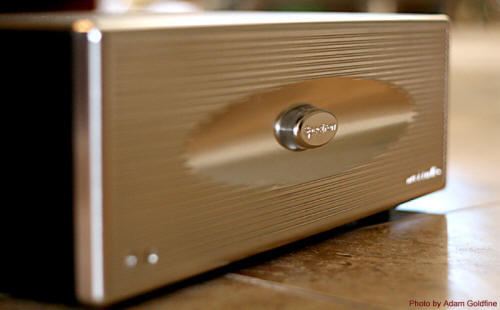
|
ADAM GOLDFINE'S SYSTEM
LOUDSPEAKERS
ELECTRONICS
SOURCES ANALOG: Music Hall MMF-7 turntable, Pro-ject 9 tonearm, Pro-Ject Speed Box Mk. II, Benz Micro ACE H cartridge, Magnum Dynalab FT-101A Tuner.
CABLES
ACCESSORIES
|
Over the years I have developed a number of prejudices, assumptions both good and bad, about certain types of audio equipment. Some are based on experience; others have come from the opinions of people I trust, while others still are just "common knowledge". Among those I consider to be in the latter category is that Class D amplifiers don't really sound that good. I haven't gone out of my way to audition many because I already "knew" that I wouldn't enjoy them. Sure, they are great for subwoofers and other high power, high efficiency applications, but as the primary amplifier in a high end system, not for me.
It was only after I had met Jeff Wells, former National Sales Manger for Spectron, and had accepted a review assignment of the Musician III Mk. 2 amps that I realized I was about to get a pair of Class D Monoblocks. So it was with some reluctance that I unpacked and installed them in my system to drive my Wilson Benesch A.C.T. speakers. And I figured if I didn't like them, I could always return them with a polite thanks, but no thanks. Without getting too far ahead of myself, the fact that you are reading this should give you some idea of how the story ends.
The Musician III Mk. 2 was developed by Spectron president and chief designer John Ulrick, co-founder (along with Arnie Nudel) of Infinity Systems. John's background in control systems engineering, designing guidance control systems for the military and aerospace industry gave him a unique perspective on high speed control loops which is essentially what a Class D amplifier is.
The Mk. 2 is the latest version of this amplifier and its third iteration; preceded by the original Musician III, and the Musician III Signature Edition. Each amp is a stereo unit which can be run in bridged mono and is how I used them. Its class D modules are designed in house by John Ulrick and the Spectron design team.
The amps are unusually heavy for Class D tipping the scales at 52 lbs each, largely due to the massive toroidal transformer located near the front of the chassis. The sculpted aluminum faceplate has a somewhat futuristic appearance with the Spectron badge mounted on an illuminated acrylic stand that glows a soft blue when the amp is powered on. On the lower left hand corner of the face plate a push button power on/off relay is mounted next to a small blue backlit electrical symbol that also glows when the amp is powered.

The rear panel holds one pair each of single ended RCA and balanced XLR inputs, a phase invert switch for each channel and a pair of heavy duty Cardas clamping speaker binding posts. There are also two Speakon connectors for Spectron's Remote Sense speaker cables which put the speaker cables in the feedback loop of the amplifier and are said to reduce measured distortion even further by controlling voltage at the at the speaker as opposed to at the amplifier's output.
In addition to being able to upgrade any of the previous models to Mk. 2 status, there are also optional upgrades to the Mk. 2 which include a V-Cap upgrade that adds oil and Teflon capacitors to the power supply ($1400) and Super-Effect Bybee Purifiers ($2000). Both upgrades purchased together are $3300. Neither option was installed in my review sample.
The rated output in stereo mode is 600 wpc into 8 ohms and the amp is claimed to be stable enough to drive 300 watts into 0.1 ohm. In mono mode the amps can deliver 1800 wpc and 7000 watts of peak power for 500 msec.
The original Musician III contained two 20,000uf energy storage capacitors, one for the +125V rail and the other for the -125V rail. The Signature Edition added a very large power supply and distributed the capacitance among four banks of 25 330uf capacitors, one bank for the +125V rail for the right channel, one bank for its -125V rail and one for each rail of the left channel. This is said to lower the power supply output impedance by a factor greater than 10 and to provide stable, low ripple power to the amplifier module. In addition to the power supply changes, the Mk. 2 version adds an improved input stage, a simplified output stage, new power switching modules, upgraded hook-up wire and custom designed capacitors in the reconstruction filter.
Being stereo amplifiers, mono operation is achieved in one of two ways. A 'Y' adapter can be used to split the incoming signal between the two channels (either single-ended or balanced) or the amps can be internally wired to bridge the input. (Internal bridging adds $75 to the cost and must be requested from the factory before purchase.) My review samples were bridged internally.
One of my quibbles with the amps was the difficulty of wiring the speaker cables to the output terminals. In mono operation, the cables must be wired with the speaker's positive side connected to the + terminal of one channel and the negative side connected to the + terminal of the other channel but with the phase inverted (thus becoming the negative side). Simple enough.
The problem is that the speaker terminals for each channel are on opposite sides of the chassis and nearly 17" apart. Unless your speaker cables have unusually long leads you will have to improvise. I ended up wiring the bare ends of DH Labs' Q-10 bi-wire cable to the Cardas dual clamping binding posts. And though the Cardas binding posts are otherwise excellent, I didn't find them particularly well suited to bare wire, the connections seeming somewhat tentative. (Though it's only fair to say that in 6 months of use I never had any problem with the bare wires).It was also a bit of a hassle to get the right bite on the wire.
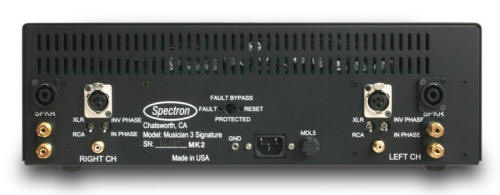
Were I to own these amps, I would have my favorite speaker cables made up with spade connectors at the end of leads long enough to span the back of the amp. With the amp running in stereo mode, any standard speaker cable with spade connectors will work just fine without further modification. (The binding posts on my review samples didn't accept banana pins but this has been corrected in the current model.)
I wired my Primare Pre30 preamp to the Spectrons using Vacuum State Electronics balanced silver wire cables and used the DH Labs speaker cables mentioned above to bi-wire the amps to my Wilson Benesch A.C.T. Loudspeakers. For power cords I used a pair of Amazing Audio's Mystic cables plugged into a Nordost Thor power conditioner. (I tried the amps straight into the wall but preferred them plugged into the Thor.) The digital source was my Vacuum State Level 6 Sony DVP-S9000 CD/SACD player.
At first listen the incredible speed and resolution of the amps was both impressive and surprising but I found them a bit dry and uninvolving, reinforcing what I knew about Class D amps. Figuring a little run time might help things out, I ran them day and night for about a week while feeding them cable radio. During that time they never got more than barely warm.
After a good run in, it was a whole new ball game. The Spectrons combined that impressive speed with the kind sweetness and musicality usually reserved for really good tube amps. They conveyed harmonic colors with both richness and precision and rather than blending tonal colors into a "sound" they rendered each as distinct, bringing it to life, intact and true to the source.
If you think of tonal colors as actual colors imagine an instrument whose timbre is made up of red and yellow but having a system that blurs them into one color, orange. The Spectrons clearly distinguished red and yellow, if you will, in a way that I've only heard from a few very expensive SETs, think Wavac.
 This
phenomenon was probably best exemplified in the third movement from
Randall Thompson's majestic and uplifting choral work, "Testament of
Freedom" from Reference Recordings' HDCD Sampler (CD, Reference
Recordings RR-S3CD).Written in celebration of the bicentennial of
Thomas Jefferson's birth, the piece has an insistent, almost
militaristic feel. When the horns sounded what seems like a call to
battle they were rendered with the kind of visceral brassiness that
forces you to pay attention and the individual components of their
timbre were discernable to a degree I had never heard from this
recording, red and yellow instead of orange. The rendering of the
individual harmonics that make up the overall timbre of the horns, was
reminiscent of the real thing.
This
phenomenon was probably best exemplified in the third movement from
Randall Thompson's majestic and uplifting choral work, "Testament of
Freedom" from Reference Recordings' HDCD Sampler (CD, Reference
Recordings RR-S3CD).Written in celebration of the bicentennial of
Thomas Jefferson's birth, the piece has an insistent, almost
militaristic feel. When the horns sounded what seems like a call to
battle they were rendered with the kind of visceral brassiness that
forces you to pay attention and the individual components of their
timbre were discernable to a degree I had never heard from this
recording, red and yellow instead of orange. The rendering of the
individual harmonics that make up the overall timbre of the horns, was
reminiscent of the real thing.
Among the things I appreciate most about the Wilson Benesch speakers is their incredible bass resolution. They start and stop on a dime revealing bass textures and detail that most speakers gloss over and the Spectrons' speed and iron fisted grip on the bottom end made for an exciting pairing with the A.C.T.s. On Marcus Miller's bass heavy track "Cousin John", M2, (CD, Telarc CD-83534) they unraveled the dense instrumental lines and placed each performer in his own space to such a degree that for the first time I could hear a bit of air and spaciousness in this usually thick sounding recording. I've heard this track on so many different high quality systems I was actually shocked to hear it so well sorted. Through the Spectrons I experienced many "oh wow" moments picking out buried instrumental lines, a synthesizer phrase, a shaker, a bit of acoustic space around the kick drum and snare that is ordinarily obscured. All of this incredible speed and resolution came with no trace of hardness or harshness.
The Spectrons were also capable of remarkable sound stage specificity and focus. Images were rendered with pin point precision but with a level of bloom and roundness that gave instruments a realistic sense of dimension. Later in the review period I received a pair of YG Acoustics' Anat Reference II loudspeakers. I've heard these speakers image so tightly and precisely with certain amps that though the effect was mesmerizing, instruments seemed unrealistically focused. I wondered if the pairing might be too much of a good thing; too much precision, too much focus, resulting in an impressive but lifeless combination.
It was anything but; the palpability and wholeness of the images made for a seductive facsimile of the real deal. The YGs revealed just how simultaneously rich and detailed the Spectrons could be. I had many a visitor in my room, including several well regarded distributors who were shocked to find out they were listening to Class D amplifiers.
To digress for a moment, the combination also changed many minds about the YGs which some have, erroneously in my opinion, pigeon-holed as being overly analytical. It just goes to show what basing your opinion on a show demo will do, something of which I am just as guilty as the next guy. At one point we dragged both the YGs and the Spectrons to a local hotel where YG director of sales and marketing Dick Diamond hosted a meeting for the AZ Audio Video club. We played the set up for roughly 40 people and over the next few days I had about half a dozen members lining up, disks in hand, to spend some time with the combo in my listening room.
Images were well placed within the acoustic context, large spacious halls sounded cavernous and deep with cues as to the size and reverberant characteristics of the space well rendered. Depth was also quite excellent; not quite as deep as what I recall from the Chalice Audio Grails but I never felt the amps lacked depth. Through both the Wilson Benesch speakers and especially the YGs, the Spectrons rendered the hall acoustic with such transparency, delicacy and resolution that the speakers disappeared, leaving the original venue it its place, as never before.
If I had any concern about the amps it was that they seemed to engage me more intellectually than emotionally. My Music Reference RM-200, though not as resolving, excels in this area. With the Spectrons, something about the flow of the music seemed just a bit too regimented, lacking the toe tapping rhythm that sends shivers down my spine and raises the hair on the back of my neck. On Diana Krall's "Peel Me a Grape", Love Scenes, (SACD, Impulse B0002841-36), I wasn't quite getting the experience of restrained passion I have felt from this track. The solidity of the images was striking, especially the plucked string bass which can sound somewhat diffuse on certain gear. It was intellectually engaging but she just wasn't seducing me.
At this point I had the amplifiers sitting on the floor. My RM-200 always resides on a set of cones of whose origin I am uncertain. At the suggestion of my good friend Alan Kafton, I placed each amp on a set of three Stillpoints. Immediately the sense of rhythm and timing, the ineffable emotionally engaging quality found in the most compelling gear was there in spades. Diana was now had that spine tingling seductive quality that makes this piece so engaging and listenable.
(As an aside, I feel it is an absolute necessity to use a well engineered support system under every component if you want it to perform at its best and exactly this area of performance is where support systems seem to make the most difference.)
Just the other night I had a friend over, a professor with whom I teach, who had come over to work on a film production class we are designing together. Her husband is a musician and she is a music lover. I played a few pieces on the system and within moments she had tears in her eyes, completely taken with how emotionally compelling the performances were. She knows nothing about high end audio but there is no doubt about how moved she was.
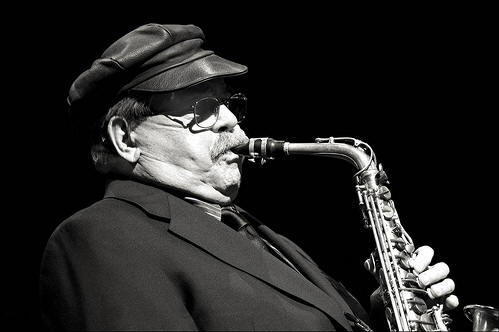
Another night, I was up late playing Phil Woods' "Charles Christopher", Chesky Records Jazz Sampler & Audiophile Test CD, (CD, Chesky JD37). One of my best friends and former college roommate, Vittorio, a recording engineer for 25 years, has been staying with me since he moved from Rome to Phoenix late last year. After listening to the track I saw the light was on in his room, so I knocked on his door and told him he had to come hear this. I cued up the track, hit play and watched as a huge grin slowly spread across his face. (Sort of like what happens in the moments following a massive bong hit.) His comment, "I'm not listening to a recording, I'm sitting at a table in a club listening to a band." I couldn't agree more.
As I hinted at earlier, Spectron offers their unique, Remote Sense speaker cables available in two models, the RS1 ($949/4ft pair) and the RS2 ($3299/4ft pair). The cables are made for Spectron by JPS Labs and the RS2s that I auditioned, feature Neutrik Speakon connectors at the amplifier end and WBT locking bananas at the speaker end. The wire itself was JPS' very stiff, next to the top of the line Superconductor 3 cable.
What is unique about these cables is that a second pair of wires sense voltage at the speaker end of the cable and extend the feedback loop of the amplifiers all the way to the speakers, making the cables part of the feedback circuit. This is said to allow for fast detailed bass and reduced distortion in the mids and highs. In my review of the Bamberg Series 5 TMW Loudspeakers I noted that switching from the DH Labs cable to the RS2s resulted in increased resolution of low level detail and improved the speakers' sense of top to bottom coherency, giving them more of a cut from one cloth character.
With both the WB and YG speakers coherency was never an issue regardless of cable. With the RS2s the general character of the amps (or lack of any discernable character) didn't change but they did become faster and more articulate sounding with even greater resolution of low level detail. Given the remarkable speed of the amps I wouldn't have thought that possible but there it was.
It's hard to say how much of this quality was due to the JPS Labs cable and how much was due to the Remote Sense technology as I didn't have another pair of the cables (without Remote Sense) with which to compare. That being said, the overall effect was impressive and definitely elevated the performance of the amps. And in contrast to the difficulty I had attaching bare wires to the Cardas terminals, the Speakon connectors couldn't have been simpler, faster or more secure. Simply line up a key way, insert the connector, twist about a quarter turn and you're done, all in all about 5 seconds. On the speaker end, the locking WBT bananas were nearly as fast and easy to attach and just as secure. I loved the usability factor of these cables.
Some time into the review period, John Ulrick suggested I try the amps with a tube in front of them. I can't at this point remember exactly what he said it would do for them but I'm sure it sounded like a good idea. In any case, I managed to procure an all tube E.A.R. 868 preamp courtesy of Dan Meinwald. With the distinctly untube-like 868 in the system everything became more musically satisfying. Nothing was softened, glossed over or rolled off. There was a noticeable increase in transparency and resolution; instruments, voices especially, became more palpable and realistically textured than with my solid state and far less expensive Primare Pre30.
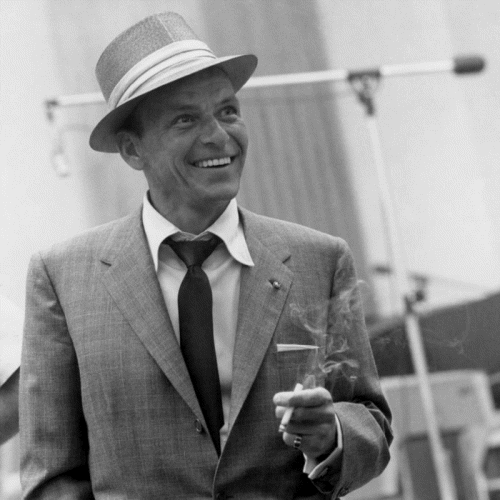
When I was a kid my mother would play Frank Sinatra's "It Was a Very Good Year" on the massive stereo console in our living room. Though I couldn't quite grasp the meaning and scope of this song at the tender age of seven, I was always haunted by its melancholy sense of remembrance and time gone by. Not bad for a seven year old. It was with some skepticism that I approached the duet performed by Ray Charles and Willie Nelson on Charles' Genius Loves Company, (CD, Concord Records/Hear Music CCD-2248-2). As it turned out, Nelson was the surprise hit of the album in my opinion. With the 868 in play the texture of his voice was rendered with such presence and gravity that it sent chills down my spine just as Sinatra had done when I was a kid. Go figure.
Going back to Randall Thompson's "Testament of Freedom", the entire piece took on a greater sense of weight, majesty, and authority through the 868. Instrumental lines that doubled the massed voices could now be distinguished and there was greater separation between instruments. The sound of the opening snare drum echoing off the upstage left wall sounded more like the snare itself and was rendered with pin point precision, leaving no doubt as to the location of the wall. The soundstage was also a bit wider and deeper with a greater sense of envelopment. I don't know what any of this says about the Spectrons themselves but the combination had real synergy and musicality.
The combination of neutral and uncolored speakers such as the Wilson Benesch A.C.T.s, or the nearly characterless and ultra-revealing YG Acoustics Anat Reference II Studios, and the extremely fast, detailed yet full bodied presentation offered by the Spectron amps made for some of the best audio reproduction I have heard. The sense of rhythm, freedom from electronic artifacts, dynamic compression or distortion of instrumental timbres allowed the music to come to life and breathe in a way that usually comes at a much higher price.
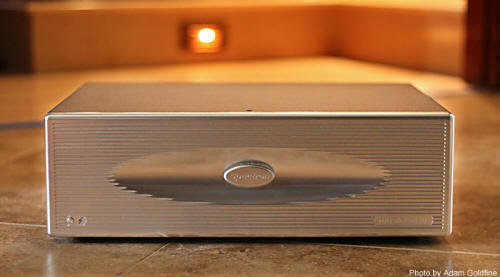
On tap were massive reserves of raw power coupled with an exceptional level of micro-dynamic finesse and timbral nuance. The amps operated flawlessly running 24/7 for 6 months, are highly efficient, never blinked an eye regardless of the load or level presented to them and above all else, made music. The RS2 cables not only elevated their performance but they were the easiest wires to connect I've ever used. The amps are ideal for a reviewer given their power, lack of character, ability to play music and capacity to drive anything. If I could afford them, I would buy them; if you can afford them, you will be acquiring a true reference. Adam Goldfine
Musician III Mk. 2
Retail: $14,390 (pair)
Specifications
-
Power Output: 1800 Watts RMS into 8 Ohms,7000 Watts peak power into 8 Ohms (500 msec.), 300 Watts RMS into .1 ohm
-
THD < .03%
-
Signal to Noise:115 dB
-
Frequency Response: ± .1 dB 20 Hz to 20 kHz at 8 Ohms
-
Bandwidth:100 kHz
-
Input Impedance: 50K Ohms (single ended or balanced)
-
Output Impedance: .018 Ohms at 1 kHz, .095 Ohms at 20 kHz
-
Damping Factor: 500
-
Gain: 26 dB (20v/v)
-
Efficiency: > 92% (Amp module)
-
Line Voltage: 100, 120 or 240 VAC 50/60 Hz Switch Selectable
-
Power Draw Idle: 40 Watts (each)
-
Weight: 52 lbs (each)
-
Size17" W x 5¼" H x 14" D (each)
-
Warranty: 3 years
-
Faceplate: Silver or Black (Anodized)
Spectron
Audio
9334
Avenue, Unit E
Chatsworth, CA 91311
TEL: 818.
435. 2090
web address:
www.spectronaudio.com
email address:
[email protected]
